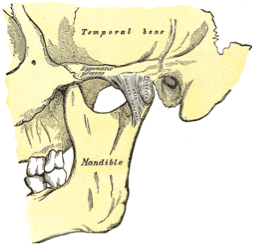
Common symptoms associated with TMJD
- Pain and tenderness on palpation in the muscles of mastication, or the joint
- Limited range of mandibular movement, which may cause difficulty eating or even talking.
- Noises from the joint during mandibular movement.
- Headache
- Dizziness
- Pain into shoulder, neck , teeth.
Causes
There are factors that appear to predispose to TMD (genetic, hormonal, anatomical), factors that may precipitate it (trauma, occlusal changes), and also factors which may prolong it (stress).
What to expect with Physical therapy
Your physical therapist will perform a comprehensive evaluation of your jaw and spinal region to identify areas of restriction and limitation. A complete plan of care will be developed to decrease your pain and improve your quality of life. TMJD is a very treatable condition with several other benefits of physical therapy:
- Increased posture
- Decreased frequency and intensity of headaches
- Improved biomechanics of the jaw and neck aiding in mastication

